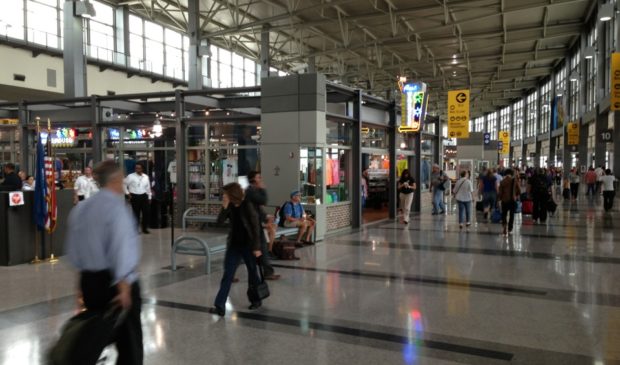Real estate leaders look for support for airport’s $4.5 billion expansion
Friday, April 26, 2019 by
Chad Swiatecki By mid-2020, city officials are likely to begin seeing options for how to fund the $4.5 billion expansion at Austin-Bergstrom International Airport that stakeholders say is needed to keep up with demand for the growing Central Texas market.
There are no funding proposals on the table yet, but the Austin business community is already being primed to get involved in debate on the issue and to throw its support behind the expansion, which the Austin Chamber of Commerce sees as key to keeping the area economy growing.
That was the message Wednesday at the Urban Land Institute Austin’s monthly breakfast, where a panel of air travel experts made a case to the area real estate community while sharing details of the airport’s 2040 master plan, which is currently under review by the Federal Aviation Administration.
The next expansion would see a new terminal constructed parallel to the existing terminal, with 20 gates added to accommodate the 30 million passengers annually expected by 2030. That headcount is roughly double the 16 million people who flew out of ABIA in 2018.
Jim Smith, ABIA executive director, said “the first decisions are a year away” concerning how the expansion will be undertaken, with some level of public support needed to keep the airport competitive without passing expansion costs on to airlines and passengers.
“The reality is right now we can’t afford to spend $4.5 billion and still have an airport that is cost-effective for the airlines to fly in and out of,” he said. “That will call for lots of creativity and prioritization over the next couple of years to decide what we build and how we accommodate the growth that is available to us because of the strength of the economy here and because Austin has so many things going in its favor.”
Smith said the 4,200-acre airport is expected to support more expansions to eventually allow around 70 million passengers per year.
The $4.5 billion expansion would be conducted in concert with expected upgrades to U.S. Highway 183 and State Highway 130. Smith said two mass transit corridors have been incorporated into the plan to fit with the city’s gradual expansion of public transit.
The recently completed nine-gate expansion at the airport has allowed for the addition of more nonstop and international flights – including a high-profile direct flight to Frankfurt on Lufthansa – that executives from the Austin Chamber believe will add more international appeal to the local economy.
Doug Driskill, chair of the chamber’s airport task force, said city leaders will need to hear from and be supported by the business community when funding proposals come up for public debate.
“This master plan will not happen unless we mobilize behind in support of the city as it looks at options and looks for ways to fund (the expansion), because we are already behind the curve after the last expansion and don’t want to be in a position to miss the next wave of growth to come,” he said.
“The master plan presents new challenges that the city and the region will have to face and my message is to stay involved and stay connected. The chamber’s position is we’ll do our part to make sure we’re behind the city in educating and engaging, because you need more people behind the city when it’s time to make tough decisions on options to finance or build and allow us to move forward without being constrained by artificial forces.”
Jeff Fegan, an air travel consultant working to support the ABIA master plan, said a multibillion-dollar expansion will be a difficult project to win approval for.
“Ideally you’d love to be able to add five gates at a time and keep up with demand, but with this airport we have a situation where the next big development is a 20-gate expansion on the other side of the airfield that also involves reconstruction of the terminal area, reconstruction of the parking and curbside, so this is going to be a very challenging project,” he said.
Photo by Dion Hinchcliffe made available through a Creative Commons license.
The Austin Monitor’s work is made possible by donations from the community. Though our reporting covers donors from time to time, we are careful to keep business and editorial efforts separate while maintaining transparency. A complete list of donors is available here, and our code of ethics is explained here.
You're a community leader
And we’re honored you look to us for serious, in-depth news. You know a strong community needs local and dedicated watchdog reporting. We’re here for you and that won’t change. Now will you take the powerful next step and support our nonprofit news organization?



